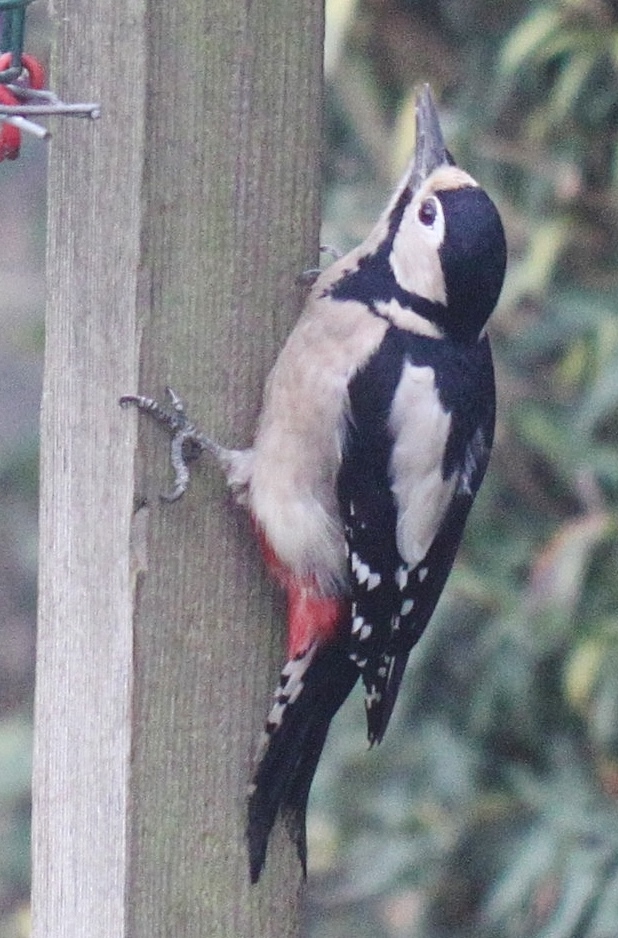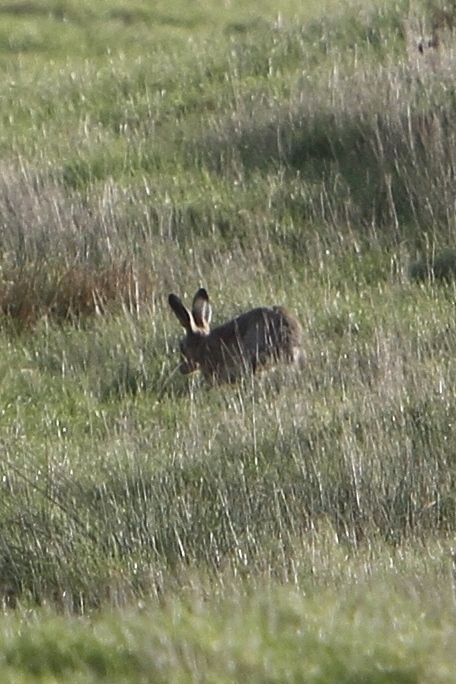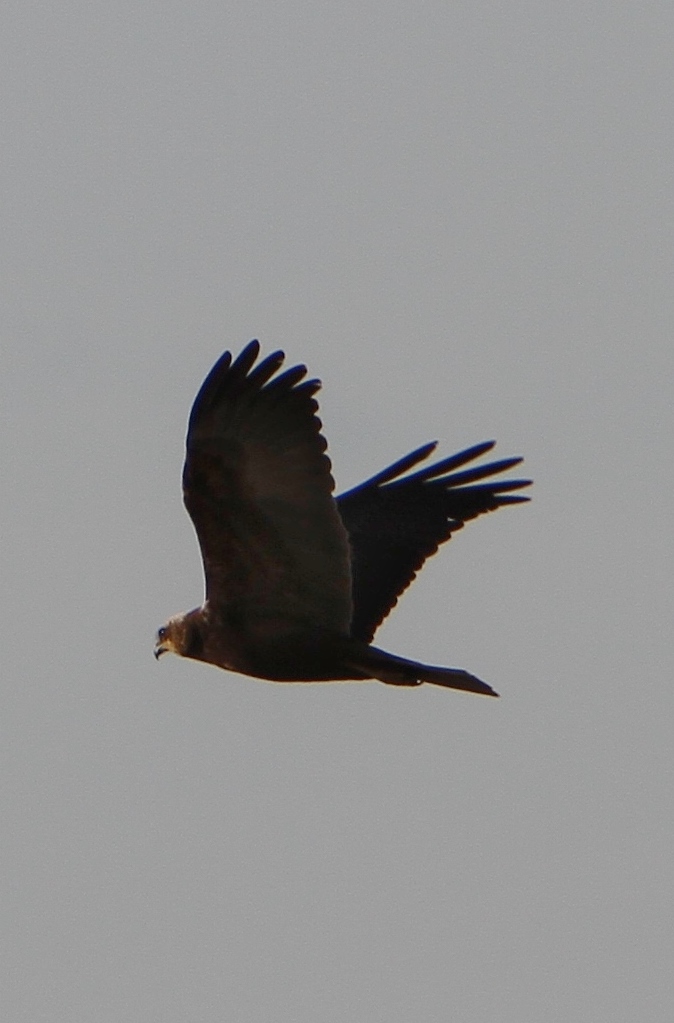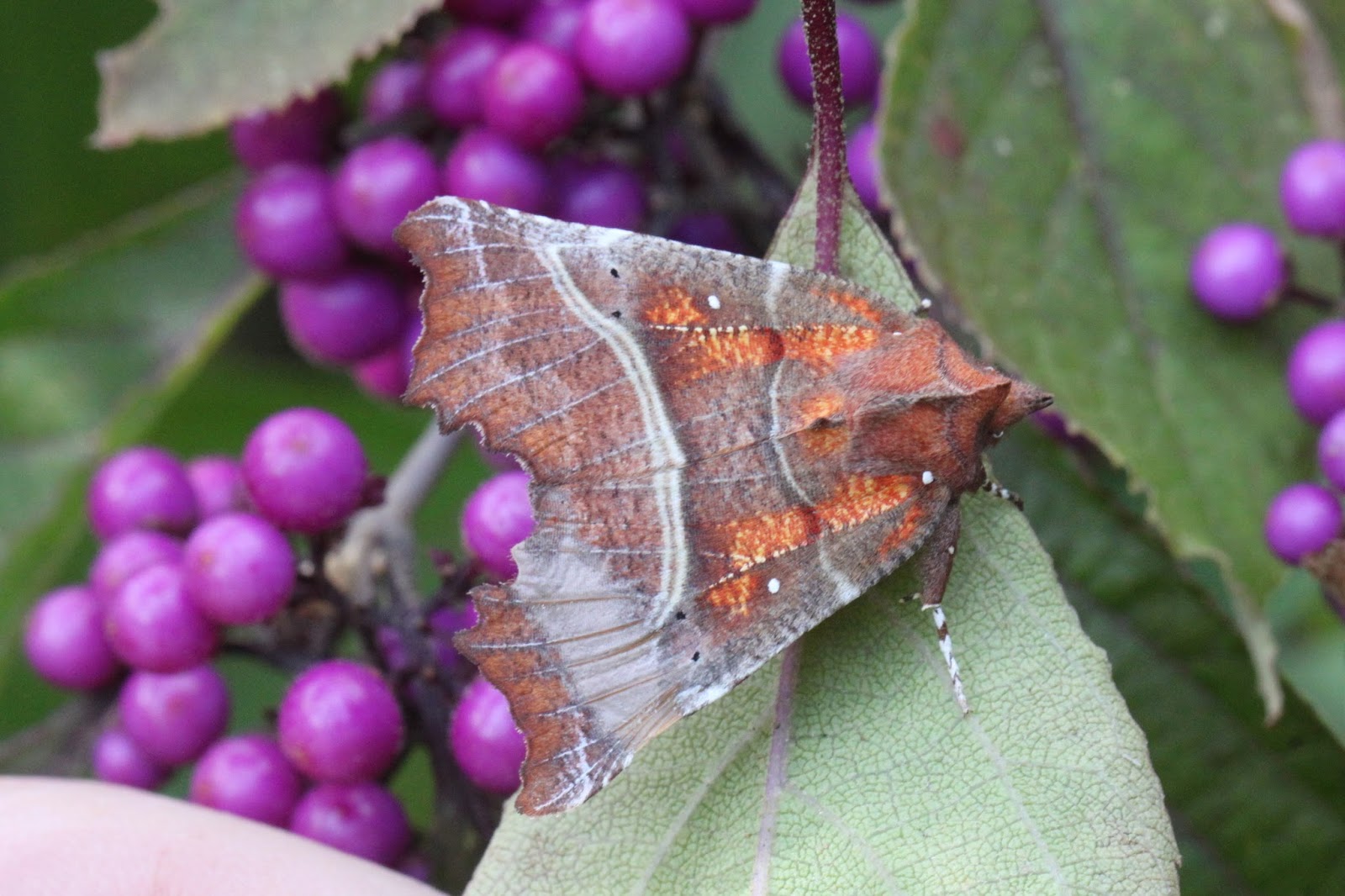With the promise of some November sunshine along the south coast yesterday , I made an early start and arrived at RSPB Dungeness just before 0830 . I had the ARC car park to myself , along with Hanson Hide , where I settled into 'Ken's Corner' , to see what was about . Opening the two corner flaps , my hopes were dashed as the closest birds were on the almost flooded Cormorant island . A half hour wait only produced 3 Coot emerging from the right hand reedbed and a Cetti's Warbler bursting into a single burst of song . Deciding to return later , it was back to the car and down the track across the road to the Visitor Centre , noting no Tree Sparrows on the feeders at the entrance . The odd gull and Cormorant passing overhead was all that was noted before reaching the car park , where once again , I was the only one there . A look around Denis's Hide found a few birds including

at least 2 Goldcrest and 2 Tree Sparrow , one pictured , feeding with a mixed Tit flock amongst the vegetation . A look from the hide was almost identical to that from Hanson Hide , a few waterfowl around and beyond the islands . Birds were in short supply , but large flying , probably biting insects were not . With little wind , the place was swarming with them , shame the Summer visitors had gone , they would have got well stocked up for their journeys . With the VC still shut , I made my
way along the hides alongside Burroughs , finding a few Shoveler outside Firth Hide and at least 4 Gt. White Egret along the far bank . Makepiece Hide was very similar , apart from a single GWE that flew immediately from the island in front , to join the others . There were more birds from Scott

Hide , but again very distant , but included a Black-necked Grebe . Constantly diving , it was feeding along the right hand bank , and although I waited hoping it would move closer , it stayed in the same area . Moving on towards Dengemarsh Hide , just Dunnock and Robin were seen , and on the first flooded hayfield , a flock of Greylag Goose took off noisily as I approached . Arriving at the track to Hookers Pits , I could hear cattle beyond the viewing mound and headed in that direction , hoping that one of the Cattle Egrets might be with them , but when I arrived at the viewing mound I found the cattle being herded from one field to another , and was informed by a birder on the mound that the Cattle Egrets had flown off when the herding started , the story of my life . It wasn't all bad though , as whilst there we had a Bittern in flight near Dengemarsh Road , a Kingfisher zip past in front and lots of Bearded Tits 'pinging' amongst the reeds , but none seen . 4 more birders arrived hoping to see the Cattle Egrets , they too disappointed with the news . 2 left , but the other two stayed on , and we

were treated to a couple of distant fly-byes by one of the visitors . As it worked out , if it had been with the cattle it probably wouldn't have been seen as only the heads of the cattle were in view behind the reedbed . A Grey Heron and Little Egret completed the set of 5 on view . I decided to retrace my steps back towards Scott Hide , hearing several more Cetti's and seeing 2 of only 4 Marsh Harriers
seen on the visit , hunting the ditches and reedbeds . As I neared Scott Hide , probably the rarest sighting of the day , Phil / Sharp by Nature , doing the circuit in the opposite direction . After a catch up and comparison of sightings , we carried on our own ways . With the promised sunshine starting to show , the view from the hide was better too , with 7 GWEs now on show , five and a Little Egret
on the island out from Makepiece Hide and another two on the edge of the Cormorant roost Willows .
No sign of the BNG this time , but there were two drake Pintail , once again very distant . On the way back to the car , a 2nd. and 3rd. Water Rail was heard , but not seen . A few Pochard headed off at

speed from behind the Willows on the left , but one female stayed just long enough for one shot before joining the rest . A last look from alongside Denis's Hide for the Goosander which has been around failed , a fellow birder telling me that it was there a couple of minutes ago ... Hardly a bird seen heading back down the track , and even the 3 Sparrows seen on the feeders turned out to be the House variety . Heading for the sea , I followed a police car and intended to pull over and have a look at the end of the ARC pit , but just before that point the police car pulled over behind a car parked on the road , the occupants , young birders , over the fence of the new diggings with scopes and tripods . Looking back as I continued , the police seemed to be moving them , and more particulary their car , from it's dangerous position on a fast narrow road . At the power station I had a look for Black Redstart without any luck , but there was very little bird movement at all , so I headed back to the ARC car park , where , again , I found that I was the only one there . No trouble reclaiming 'Ken's Corner' and at least there were more birds around , starting with a redhead Smew , a small bird at a

great distance . Even further away from the hide , towards the far bank most of the time , at least 5 Goldeneye , soon followed by the 2 Slavonian Grebe , to the left of the Cormorant island . I had hoped to get both in one frame , but the only half
decent but distant shot was a singleton . The old saying goes 'lightning doesn't strike twice' , but it did today when a birder made his way down the dark hide and sat to my right . A while later the penny dropped , it was Phil again . The few birders that arrived started to leave and it was soon down to Phil and myself to close up and head home . Just before leaving the hide , 2 Marsh Harriers , one a fine
male ,started looking for their evening meal and everything took off , making it even more difficult to find any of the less common species . Heading up towards Ashford , and after being in sunshine , the sky became as black as night and then a heavy rain shower , lucky us . Other interest found on the
visit , remembering we are in the second half of November , Bramble in full flower and Evening
Primrose / Oenothera erythrosepala , a member of the Willowherb family , still in flower , and found along the track to Hanson Hide , and on the track alongside Hookers Pits , Viper's Bugloss / Echium
vulgare , a member of the Borage family also in flower .
And finally , on a look around the reserve with the feeders , hoping for a first Siskin of the year ,
found instead 3/4 Marsh Tits , 2 bearing rings , probably fledged from boxes on the site , amongst
other species . Just a shame the light was so bad .
















.JPG)












































